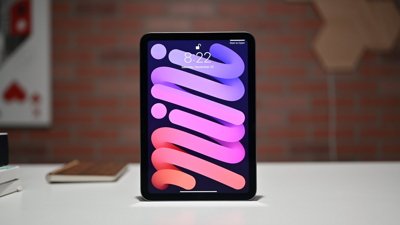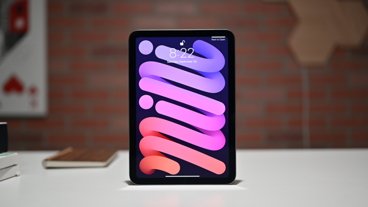The retail price of an OLED iPad is rumored to be considerably higher than current models, with one key component likely costing Apple three times more than what it pays now.
Apple is thought to be working on a update to the iPad Pro line, introducing OLED displays to the range sometime in 2024. While the use of the technology could result in an even thinner design than the current miniLED-backlit models, it could end up being quite expensive to consumers.
According to sources cited by TheElec, the cost of the OLED panel from suppliers could be two to three times the price of existing OLED panels of the same size. While an existing 10-inch OLED panel could cost $100 to $150 apiece, the price of the component for an 11-inch iPad Pro could be around $270, rising to $350 for a 12.9-inch panel.
Part of the price difference can be down to the way the panels are produced, specifically a two-stack tandem structure with two OLED layers. The additional use of a low-temperature polycrystalline oxide (LTPO) thin film transistor (TFT) and a hybrid OLED structure combining a glass substrate with thin film encapsulation, could push the price up.
Sources indicate that the prices are just estimates for the moment as development for the OLED iPad has yet to be completed. Price negotiations are expected to start in the summer.
If the price of the panels is sufficiently high, it is almost certain that the extra expense will be passed on to consumers in the form of iPad Pro price rises in the future.
Currently, Samsung Display is said to be developing the 11-inch OLED panel, while LG Display is doing so for both the 11-inch and 12.9-inch versions. However, both apparently failed to satisfy Apple with their production performance in a recent evaluation.
On February 23, new Apple OLED supplier BOE was reportedly taken out of the running to produce the OLED panels for the iPad Pro.
TheElec is a good source for movement within Apple's supply chain. It is notably less accurate as it pertains to Apple's specific plans for a component. Monday's report is more the former, than the latter.
 Malcolm Owen
Malcolm Owen







-m.jpg)






 Christine McKee
Christine McKee
 Amber Neely
Amber Neely
 Andrew Orr
Andrew Orr

 Sponsored Content
Sponsored Content

 William Gallagher
William Gallagher








12 Comments
My 12.9 inch iPP was already priced in the painful range. If I hadn’t gotten a windfall I likely would not have gone for it even though that’s the model I wanted and needed. If the price goes up another couple hundred, well, I’m going to have to reevaluate my needs when it comes time to replace it.
Probably just for the priciest models, and hopefully Apple has a way to keep prices under control, with economies of scale, reduced cost of other components, etc. Different people have different priorities, but as someone who spends hours each day using an iPad Pro, weight and thickness are two of the few areas left where I feel like any improvement would be clearly noticed and appreciated. Thickness would be less important if they returned to the rounded and tapered edge design, which makes it feel thinner, but the only way to make it feel lighter is to make it lighter. The other thing they could do is to design all models based primarily on a landscape orientation, with the front cameras on the longer side and stereo speakers on the shorter sides.
I thought we were told a year or three ago that miniLED was new tech superior to OLED?
I guess if the goal is to get iPad Pro sales volume to be similar to Mac Pro volume then a massive price hike makes sense.